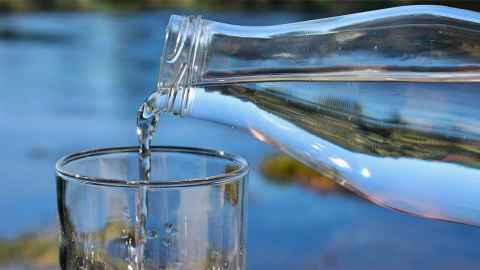No future without safe water
22 March 2022
Opinion: On World Water Day Lokesh Padhye examines urgent freshwater issues, highlighting that groundwater pollution can take decades or centuries to recover from.

"Water, water everywhere…" as we recite the famous poem by Samuel Coleridge, we picture a sailor singing it in the middle of the sea, surely not someone on land in the 21st Century.
However, the recent water crises around the world, such as 'Day Zero' of Capetown or the severe drought faced by Aucklanders two years ago, reminds us that if we do not manage our water well, the “nor any drop to drink" part of the verse above may well become a reality.
The United Nations observes World Water Day on March 22 every year to advocate the sustainable management of freshwater resources. Freshwater is one of the most precious resources on earth, but access to clean, safe water is taken for granted by most of us.
That is surprising, considering that the majority of the freshwater, which only makes up less than 3 percent of the total water on earth, is inaccessible to us. And the fraction of freshwater available to us is either unsustainably managed or polluted through industrial or domestic activities. World Water Day is about increasing awareness of freshwater-related issues, including water scarcity, water pollution, the impact of climate change on water resources, and sustainable water resource management.
The theme this year is groundwater. It couldn't be more relevant to New Zealanders as we rely heavily on groundwater as a source of freshwater. Groundwater from nearly 200 aquifers replenishes our surface water sources, irrigates land and is the source of the domestic water supply for a number of cities and towns, including Christchurch, Lower Hutt, Hastings and Napier. The annual value of the water used for irrigation alone is estimated at $2 billion. Given this critical role of groundwater, it is important to understand some of the biggest challenges facing us in terms of groundwater quality. I have highlighted three of the most pressing issues for New Zealand's groundwater below, but as you can imagine, there are many more.
The most persistent threat to our groundwater is from nutrients and especially nitrate. In drinking water, nitrate is regulated, and the regulation is based on the concentration to safeguard against 'blue baby syndrome', a condition in which blood cannot carry enough oxygen. However, some of the recent epidemiological studies have linked nitrate to increased colorectal cancer risks, suggesting that New Zealand's current drinking water regulations for nitrate may not be protective enough. New Zealand's colorectal cancer rate is one of the highest globally. Considering that more than 30 percent of New Zealand's monitored bores show elevated nitrate levels, there is an immediate urgency to tackle nitrate leaching due to high-intensity land uses.
There is an argument that microbial contamination should not occur in groundwaters because pathogens filter out within soil layers. However, as evident from 'Havelock North' incident of 2016, where four people died and more than 5000 fell ill after the town's bore supply got contaminated, pathogens will expose the slightest weakness in water safety and security. Thus it becomes critical in the current age to have the final barrier of water disinfection, even if the source of drinking water is 'pristine' groundwater. That is because pollutant pathways and processes are invisible underground.
The recently released report of the Parliamentary Commissioner for the Environment highlights exactly that when it comes to chemicals of emerging concern. We increasingly read the news about anthropogenic chemicals, including pharmaceuticals, pesticides, plasticisers, being detected in aquifers around the country. In 2018, New Zealanders were informed that per- and polyfluoroalkyl substances (PFAS), also called 'forever chemicals', had caused extensive groundwater contamination through their historical use. With the use of thousands of manmade chemicals, such as PFAS, in our daily lives, it is not surprising that they are finding their way to groundwater and eventually in our glass of drinking water. What is surprising is the lack of detailed monitoring efforts required to understand their sources and occurrence levels to estimate the exposure and health risks.
Groundwater pollution is a significant challenge that can take decades or even centuries to recover from. In many places around the country, we do not even know the groundwater quality for some of the contaminants mentioned above. Monitoring, protecting and sustainably using groundwater will be essential to tackle water scarcity, which is intensifying due to climate change, and meet the safe water needs of a growing population.
Dr Lokesh Padhye is a senior lecturer in the Department of Civil and Environmental Engineering in the Faculty of Engineering.
This article reflects the opinion of the author and not necessarily the views of the University of Auckland.
Used with permission from Newsroom No future without safe water 22 March 2022
Media queries
Alison Sims | Media adviser
M: 021 249 0089
E: alison.sims@auckland.ac.nz